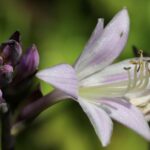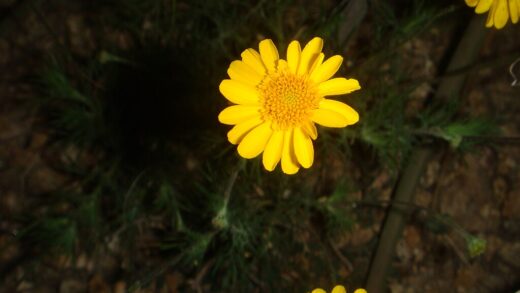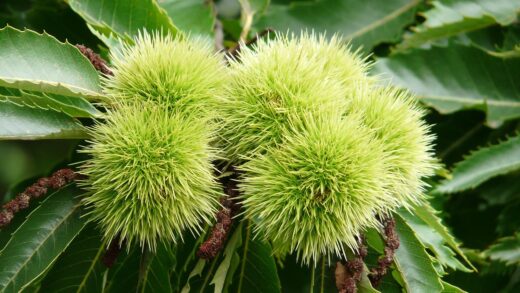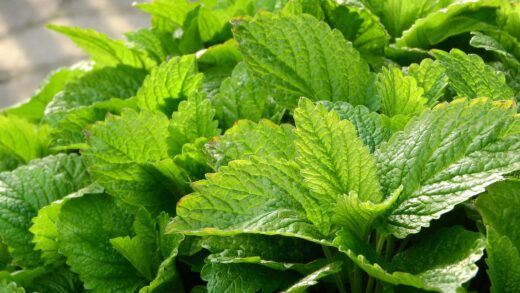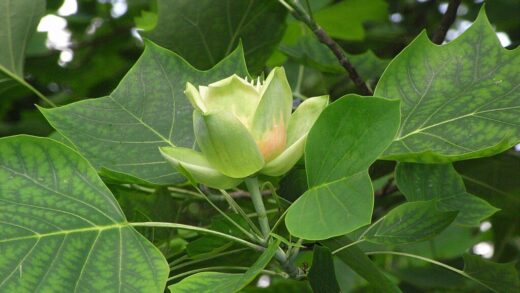Watering and fertilizing of the Hosta

Achieving a truly magnificent Hosta display hinges on mastering two fundamental aspects of their care: watering and fertilizing. These plants, with their famously large and luscious leaves, have a significant demand for moisture to maintain their turgor and vibrant appearance. At the same time, a well-timed and balanced approach to fertilization provides the essential nutrients needed to fuel their rapid growth and enhance the rich colors and variegation of their foliage. Striking the right balance is key; too little water can lead to stress and scorching, while too much can cause fatal root rot. Similarly, improper fertilization can be ineffective or even harmful. This comprehensive guide will delve into the best practices for watering and fertilizing your Hostas to ensure they remain healthy, robust, and beautiful throughout the entire growing season.
The primary goal of watering Hostas is to maintain a state of consistent moisture in the soil, replicating the conditions of the moist woodland floors where they originate. The need for water is at its highest during the active growing season, from spring through summer, when the plant is producing and supporting its large leaves. A general guideline is to provide the equivalent of one inch of rainfall per week, but this must be adjusted based on your specific environmental conditions. Sandy soils will require more frequent watering than clay-based soils, and plants exposed to more sun or wind will lose moisture more quickly than those in deep, protected shade.
The method of water application is just as important as the frequency. Watering deeply and less frequently is far more beneficial than shallow, frequent sprinklings. A deep soaking encourages the Hosta’s roots to grow deeper into the soil, making the plant more resilient and drought-tolerant over time. The most effective way to achieve this is by using a soaker hose or drip irrigation system, which delivers water slowly and directly to the root zone. This method also minimizes water waste through evaporation and, crucially, keeps the foliage dry, which is a primary strategy for preventing the spread of common fungal diseases like anthracnose.
Observing your plants is the best way to determine their watering needs. The leaves themselves will often give you a clear signal; if they begin to look slightly wilted or droopy during the heat of the day, it is a strong indication that the plant is thirsty. It is best to water in the morning, which allows the plant to hydrate before the hottest part of the day and gives any moisture that does splash onto the leaves ample time to dry in the sun. Watering in the evening can be done, but it may leave the foliage damp overnight, creating a more inviting environment for slugs, snails, and fungal pathogens.
For Hostas grown in containers, the watering regimen must be much more rigorous. The limited volume of soil in a pot dries out very quickly, especially on warm or windy days. Container-grown Hostas often need to be checked daily and may require watering every day or even twice a day during the peak of summer. Always water until you see it running freely from the drainage holes at the bottom of the pot, as this ensures the entire root ball has been thoroughly saturated. Never allow the pot to sit in a saucer of standing water for an extended period, as this will lead to waterlogged soil and root suffocation.
More articles on this topic
Developing a watering schedule
Establishing a consistent and effective watering schedule for your Hostas is less about adhering to a rigid calendar and more about developing a responsive routine based on observation and environmental factors. While the “one inch per week” rule is a useful starting point, it serves better as a weekly total than a strict application guide. The actual frequency will be dictated by rainfall, temperature, humidity, and your garden’s specific soil composition. A gardener with fast-draining sandy soil might need to water every three to four days during a dry spell, whereas a gardener with moisture-retentive clay soil might only need to provide supplemental water once every seven to ten days.
The life stage of the plant also plays a critical role in determining its water requirements. Newly planted Hostas, including recent divisions, have a compromised root system and are much more vulnerable to drying out. For the first few weeks after planting, it is crucial to keep the soil consistently moist to encourage the growth of new roots and help the plant become established. This may require checking the soil every couple of days. In contrast, a large, well-established Hosta clump with a deep and extensive root system will be much more resilient and can tolerate brief dry periods with less immediate stress.
A simple yet effective tool for developing your watering schedule is the “finger test.” By inserting your index finger two to three inches into the soil near the base of the plant, you can get an accurate assessment of the moisture level where it matters most. If the soil feels dry at that depth, it is time to water. If it still feels moist, you can wait another day or two before checking again. This hands-on method removes the guesswork and ensures you are watering based on the plant’s actual needs rather than an arbitrary schedule, preventing both under-watering and the more dangerous problem of over-watering.
It is also important to adjust your watering practices as the seasons change. The need for water is greatest in late spring and summer when the plant’s growth is at its peak and temperatures are highest. As autumn approaches and the weather cools, the plant’s growth slows down as it prepares for dormancy, and its water requirements will naturally decrease. Tapering off your supplemental watering in the fall is important to signal to the plant that it is time to wind down for the season. Continuing to water heavily late into the autumn can promote late-season growth that is susceptible to frost damage and may interfere with the plant’s ability to harden off properly for winter.
More articles on this topic
Choosing the right fertilizer
Selecting the appropriate fertilizer is a key step in providing your Hostas with the nutrients they need to produce their spectacular foliage. For general-purpose feeding, a balanced granular fertilizer is an excellent choice. Look for a product with a relatively even ratio of the three primary macronutrients: nitrogen (N), phosphorus (P), and potassium (K). A formulation like 10-10-10 or 12-12-12 is ideal, as it provides an equal amount of each nutrient to support overall plant health, including leaf growth (nitrogen), root development (phosphorus), and general vigor and disease resistance (potassium). Slow-release granular fertilizers are particularly beneficial as they break down over several months, offering a steady, consistent supply of nutrients rather than a single, intense burst.
For gardeners who prefer an organic approach, there are numerous excellent alternatives to synthetic fertilizers. Well-rotted compost is perhaps the best all-around soil amendment and fertilizer for Hostas. Applying a one to two-inch layer of compost as a top dressing around the base of the plants each spring enriches the soil with a wide range of nutrients and beneficial microbes. Other effective organic options include aged cow manure, worm castings, and balanced organic granular blends that often contain ingredients like bone meal, blood meal, and kelp meal. These organic materials not only feed the plant but also improve the soil structure and its ability to retain moisture over the long term.
Water-soluble or liquid fertilizers offer another method for delivering nutrients, often used to supplement the main spring feeding. These are mixed with water and applied during a regular watering session, providing nutrients in a readily available form that the plant can absorb quickly. This can be particularly useful for giving a quick boost to plants that appear to be lagging or for providing consistent nutrition to container-grown Hostas, where nutrients are leached out more rapidly. When using liquid fertilizers, it is often recommended to mix them at half the strength indicated on the packaging and apply them every four to six weeks during the peak growing season to avoid over-fertilization.
It is important to understand what to avoid when choosing a fertilizer for Hostas. High-nitrogen fertilizers, such as those formulated for lawns, should generally be avoided. While nitrogen is essential for leaf growth, an excessive amount can lead to the development of soft, floppy leaves that are more susceptible to damage and disease. It can also cause the variegation in certain cultivars to fade, resulting in a less distinct and attractive appearance. The goal is to promote balanced, healthy growth, and a fertilizer with an even N-P-K ratio is the most reliable way to achieve this.
Application techniques and timing
The timing of fertilizer application is crucial for maximizing its effectiveness and ensuring it supports the Hosta’s natural growth cycle. The single most important time to fertilize is in the early spring, just as the new shoots are poking through the soil. Applying a slow-release granular fertilizer at this stage provides the plant with the necessary nutrients to fuel its initial, rapid burst of leaf production. This early feeding helps the plant develop large, well-formed leaves and builds a strong foundation for the entire growing season. A single application of a quality slow-release product in the spring may be sufficient for the entire year for Hostas planted in well-amended soil.
When applying granular fertilizer, proper technique is essential to prevent damage to the plant. The fertilizer should be sprinkled evenly on the soil surface around the plant, starting a few inches away from the crown and extending out to the drip line. It is critically important to avoid getting the granules on the emerging Hosta eyes or in the crown of the plant, as the concentrated chemicals can cause severe burns to the delicate new tissues. After broadcasting the granules, use a small hand cultivator or your fingers to gently work them into the top inch of soil, then water the area thoroughly. Watering is a non-negotiable step as it activates the fertilizer and begins the process of carrying the nutrients down to the root zone.
If you choose to use a liquid fertilizer for supplemental feedings during the summer, the application technique is straightforward. Simply mix the fertilizer with water according to the product’s instructions—often at half-strength for Hostas—and use the solution to water the base of the plant. This should be done during a regular watering session, applying the solution to soil that is already slightly moist, which helps with nutrient absorption and prevents root burn. These supplemental feedings can be beneficial for maintaining vigor, especially for potted plants, but they should be discontinued by late summer.
It is vital to know when to stop fertilizing. All feeding should cease by late July or early August in most climates. Fertilizing late in the season can encourage the plant to produce a flush of new, tender growth at a time when it should be slowing down and preparing for winter dormancy. This late growth will not have sufficient time to harden off before the first frosts and will be highly susceptible to cold damage. Halting fertilization allows the plant to naturally transition into its dormant phase, ensuring it has properly stored its energy reserves in the roots to survive the winter and emerge healthy the following spring.
Recognizing nutrient deficiencies
While proper fertilization can prevent most issues, it is helpful for gardeners to be able to recognize the visual signs of potential nutrient deficiencies in their Hostas. A general lack of vigor, stunted growth, or leaves that are smaller than usual can be an early indicator that the plant is not receiving adequate nutrition. One of the most common signs is a general yellowing of the leaves, a condition known as chlorosis. If the older, lower leaves are turning yellow first, it often points to a deficiency in a mobile nutrient like nitrogen, as the plant is moving the nutrient from the old leaves to support new growth.
If the yellowing appears primarily on the new, younger leaves, it may indicate a deficiency in an immobile nutrient, such as iron or manganese. Iron chlorosis typically presents as yellow leaves with a network of fine green veins, a very distinct pattern. This issue is often not caused by a lack of iron in the soil, but rather by a soil pH that is too high (alkaline). In high pH conditions, the iron becomes chemically locked up in the soil and is unavailable for the plant to absorb, even if it is present. Correcting the soil pH by adding soil acidifiers like elemental sulfur or iron sulfate is often the most effective long-term solution.
Other nutrient deficiencies can also manifest with specific symptoms, although they are less common in Hostas if the soil is well-amended with organic matter. A phosphorus deficiency, for example, can sometimes cause the leaves to take on a dull, slightly purplish tint. A potassium deficiency might first appear as yellowing along the margins or edges of the older leaves, which can eventually turn brown and necrotic. However, these symptoms can also be caused by other environmental stressors, such as improper watering or root damage, so it is important to consider all factors before concluding it is a nutrient issue.
Before taking drastic measures, it is always best to start with the simplest solutions. If your Hostas are showing signs of deficiency, first ensure that your watering practices are correct and that the soil is not compacted. Then, consider applying a balanced, water-soluble fertilizer to see if the plant responds. If the problem persists or you suspect a pH issue, conducting a soil test is the most accurate way to diagnose the problem. A soil test will provide a detailed report on the nutrient levels and pH of your soil, allowing you to make targeted amendments to correct any specific imbalances and create the ideal growing environment for your plants.













